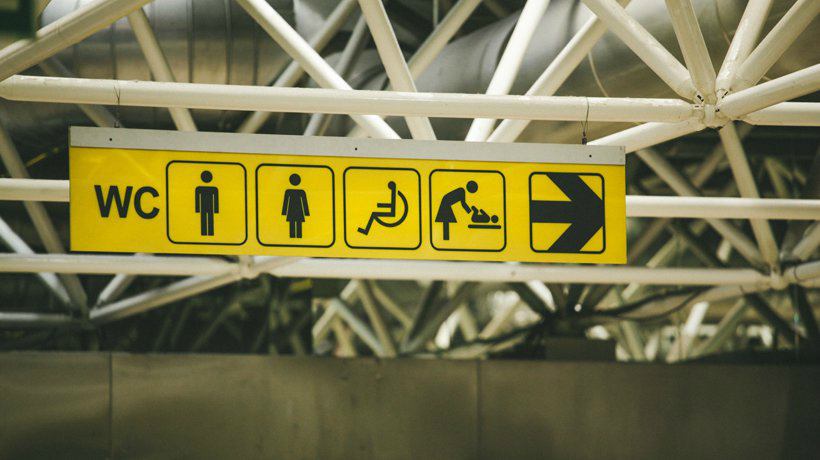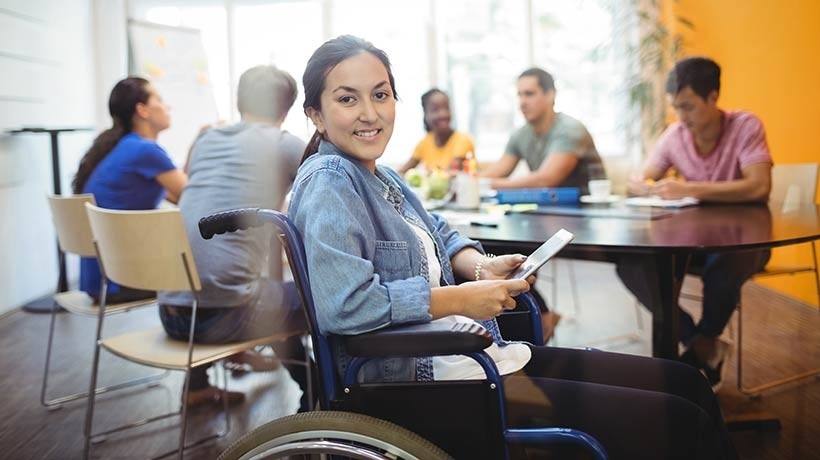Accessibility Learning Trends For 2023
Accessibility refers to creating solutions for a wide range of people by removing barriers for learners with varying levels of (dis)abilities—including those related to vision, speech, hearing, learning, cognitive abilities, movement, and aging, among others. In today's world of technological advancements, focusing attention on accessibility in learning for the modern workforce will enable individual and organizational business success.
Accessibility in learning is now a widely accepted norm, and companies are incorporating accessibility while creating content or products for the web. Currently, there are two predominant trends of accessibility in learning design. These include:
- A technology-first approach
Combining the power of technology with the intelligence and judgment abilities of a human, it is possible to create effective solutions. Assistive technologies such as speech recognition, Braille readers, and reading applications can all be used to develop accessible solutions. Automation can then be used to monitor accessibility errors that can either be fixed automatically or, in tricky situations, be referred to a human expert for further analysis and resolution.
- Neurodiversity and accessibility
Neurodiversity, which is often used to refer to cognitive and learning disabilities, such as autism, dyslexia, attention deficit hyperactivity disorder (ADHD), and so forth, has fueled the need for standards that can help develop solutions focusing on people with different learning experiences. We foresee a greater thrust on the development of standards around neurodiverse accessibility in 2023 with a view to encourage full participation of neurodivergent people with their skills, insights, and creativity.
Inclusive Design Principles To Improve Accessibility In Learning
While building accessibility in learning, designers must remember the objective of making their work accessible to everyone, especially people with varying levels of disabilities. Therefore, designers can use inclusive design principles and enable a comparable learning experience for everyone without compromising the quality of the content. They may make an effort to identify situational challenges, since different people will use the design interface according to their unique situations—such as people at work, at home, or on the go.
Considering the different ways people access learning content, it is essential to provide different ways to complete tasks. This will help maximize learning by fostering greater accessibility in learning design. Using inclusive design principles, the solution can be enriched with features that enhance User Experience (UX) and improve the extensibility of the solution to everyone.
Accessible Learning Content Fundamentals
It may be noted that while producing content via a content management system (CMS), creators have limited access to source code and other underlying elements that affect accessibility.
Therefore, to be able to create accessible content, creators must be mindful of the following considerations that have been explained previously:
- Text content
- Links and navigation
- Images
- Color and contrast
- Document structure
- Email accessibility
Design Techniques For Improved Accessibility In Learning
To incorporate accessibility in learning design, designers can follow the guidelines prescribed in the Web Content Accessibility Guidelines (WCAG). Some of the design considerations that may be followed for accessibility in learning are described below:
- Page structure and navigation – A well-defined page structure and navigation of the web content can help users locate the desired content easily and allow browsing other sections or pages more efficiently. Designers must consider using consistent style, naming, and positioning, as well as alternative methods of navigation, such as a site map or site search for easy access.
- Content and focus order – Include descriptive headings, section headings, and labels to help users who can see only a few words at a time know the purpose of the section. The focus order between controls should be in a predictable order to help readers using assistive technology read the content aloud.
- Using images – Designers may use images that are informative, functional, and complex (such as graphs and diagrams). When using a group of images, use alternative text for one image to provide information for the group of images as a whole.
- Using color – Use of colors should be supplemented with additional color-agnostic identification methods, such as labels on graphs, etc.
- Iconography and typography – Use icons and fonts that every visitor, regardless of their disability, can understand. Maintain line spacing of at least 1.5 times the font size with spaces after paragraphs to at least 2 times the font size. Font size should not be smaller than 10 points.
- Visible focus – Define the visible focus state of input elements to help people with attention limitations find the location of the focus. It also eliminates the possibility of sudden change in context, which may be jarring for people with cognitive disabilities.
- Form labeling and error messages – Labels must be provided to help identify all form controls. Instead of using placeholders, use labels to convey information about a field. Error messages must be provided when a user inputs an invalid value or format.
Integrating Accessibility Into UX And Design For Learning Programs
Accessibility in learning is more effective when it is core to the design. In-built accessibility ensures users can meet their learning goals with greater ease, regardless of the device they use or the location they are in. Baking accessibility in learning design helps cater to the varied needs of diverse audiences, thus ensuring that the processes are inclusive.
When starting out, designers must begin with an accessibility mindset, which will help them address all accessibility requirements. It may be useful to consider the following parameters when creating UX designs to help deliver an inclusive and accessible experience for learners:
- Annotating designs for accessibility – Accessibility annotations or clearly defined notes on wireframes that address accessibility-related information and behaviors—such as using assistive technology to provide information about interactive items—can prove useful in delivering the information in a meaningful way.
- Scope out accessibility requirements – Designers must look to fully scope out accessibility requirements to be able to provide timely access for the review cycle. When conducting research, it is recommended to consider accessibility and inclusive design issues, as well as the potential disabilities of prospective users.
- Involve disabled people – Involving disabled users in the design process can help you gain invaluable feedback on functionality, which can help improve the overall solution. This exercise may be particularly useful in addressing any challenges that affect ease of use. Disabled users involved in testing may be allowed to use their own equipment, as the users are more comfortable using their own equipment, which may improve the quality of the feedback.
Accessibility Requirements In Mobile Learning
Accessibility in learning, in its true sense, enables users to use any device to access the solution. Given the increasing use of smartphones in recent times, it is recommended that designers consider mobile-based learning requirements when designing solutions. For instance, instead of relying on device-dependent interactions needed to complete a task, designers may provide the required information in such a way that the user may dismiss it without affecting the page experience.
Similarly, if device motion is needed to activate a specific function, it may be challenging for users with movement-related problems. In such a case, designers must look to provide an alternate method to activate the feature without the need to move the device.
To ensure native Android apps are accessible, some of the basic techniques and considerations that designers can follow are described below:
- Content structure – Related content pieces must be placed together to help users gather the required information. Headings and subheadings should be used to separate sections.
- Text enlargement – The users must be provided with the ability to increase the font size according to their requirements.
- Navigation – Navigation should be user-friendly, which enables users to jump to the desired content quickly, as well as browse other sections more efficiently. Alternate methods of navigation, such as a site map or site search, must be included.
- Images – Relevant images or groups of images may be used to supplement the information provided. Use alternate text for images that can be read by screen readers to help people facing difficulty in perceiving visual content.
- Forms – Design forms in a way that makes it easier for users to understand the inputs they must provide while also helping them avoid mistakes and correct them in case they do make a mistake.
- Alerts and notifications – In addition to using colors, users may be alerted using informative text explaining the problem and what needs to be done for the solution.
- Keyboard access – Many users, especially those with motor disabilities, rely on keyboards. Make navigation easier by tabbing items to provide keyboard focus so that they can be activated using the keyboard.
- Testing – Use assistive technologies such as screen readers for manual testing of the designs. In addition, involving disabled people in testing can help understand the efficacy of the solution and the challenges that need to be overcome. Online tools may also be used to assess the solution's accessibility.
Accessibility Considerations For Multimedia Learning Content
Accessibility in learning design for multimedia, such as animations and videos, may be considered both from a content and technical perspective. Following best practices and the prescribed guidelines—such as flashing content for no more than three times per second, using low contrast flashes, and not using too much red—can help ensure that multimedia basics are followed throughout the full design process while also utilizing the following:
- Captions and transcripts
- Audio descriptions
- Moving, blinking, flashing content
When accessibility is at the core of learning design, in accordance with WCAG, it allows a diverse section of people to access learning content and enhance their skills, thereby improving their productivity. I hope the article provided the requisite insights as to how accessibility considerations in learning design can be a crucial step forward in removing barriers and fostering an inclusive learning environment.
Read More:
- 2023 Learning Trends For The Connected Workplace
- Emotional Intelligence and Workplace Learning – The What, Why, and How
- Imagine, Experience, Connect - Driving Value Through Immersive Learning
- How to Create Emotionally Intelligent Learning Programs
- How to Adopt a Learner-centered Design Approach for Your Learning Programs










